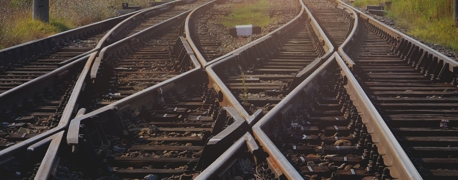The Train Accident that Changed US Railroads Forever

Today, we don’t hear about train accidents as often as they happen. This is frequently because regulations, safety improvements, and other operational methods have made trains accidents less severe and out of the headlines. While about 2,000 train accidents still happen each year, the industry has made improvements over the years to make notable mass causality accidents less common.
One of the accidents that changed the railroad industry in the United States forever happened over 100 years ago. Looking back at one of the darker moments in American railroad history means we can remember the victims, look at our mistakes, and continue to pursue safety standards that help keep trains an integral and safe part of the country’s fabric.
The Great Train Wreck of 1918
On July 9, 1918, two passenger trains collided head-on in Nashville, Tennessee. Today, it remains the worst railroad accident in United States history. The amount of lives that the crash claimed varies based on what source is used. Many historians place the number of deaths at 101 while other reports place the number of dead as high as 121. Additionally, at least 171 people were seriously injured.
The accident occurred on the Nashville, Chattanooga, & St. Louis Railway when train No. 4 departed westward from Union Station and collided with train No. 1 that was inbound from Memphis. They were both traveling along a single-track line that was known as Dutchman’s Curve.
Human error caused the incident. Train No. 1 left Memphis about 35 minutes behind schedule that morning It contained a baggage car, six wooden coaches, and two steel sleeping cars. As it traveled, it had the right of way according to practices at the time. So, dispatch informed the crew of train No. 4 that they were to stop and wait for train No. 1 to pass before proceeding.
The conductor of train No. 1 overheard a passing switch engine while collecting tickets and mistakenly assumed it was train No. 4 passing as instructed. However, the crew failed to visually identify the train as required. To make matters worse, train No. 4 was given the signal to proceed along the single track by mistake. Finally, the crew of train No. 4 failed to check if train No. 1 had arrived at the junction before proceeding, as required by the railroad’s management.
In other words: there were three chances to prevent this deadly accident and crews from both trains failed to take them.
The crash was so loud was heard up to two miles away. Local reports indicate that about 40,000 people rushed to the scene of the accident to help survivors, many of whom were African American laborers en route to a job site.
After the Dutchman’s Curve Accident
Officials from the Interstate Commerce Commission (ICC) determined that crews in train No. 4 and the railroad’s towers failed to account for the presence of train No. 1. The commission also found that there was a lack of proper safety systems in place to track positions of trains. The nation’s safety regulations for train operations would be greatly influenced by the mistakes made on this day.
Safety laws weren’t the only change produced by this tragedy. The ICC noted that the wooded cars of each train contributed significantly to the injuries and deaths of the incident. After this accident, the nation’s railroads began using passenger cars made from steel—a material that offers much more protection to occupants than wood.
- Categories


